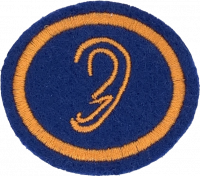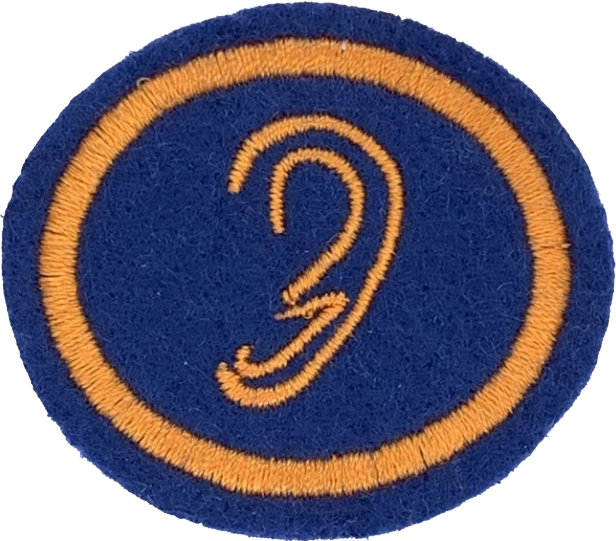AY Honor Hearing Answer Key
1
2
Be sure to record your finished product on camera.
MAKE A MODEL EARDRUM (Also known as the tympanic membrane)
You will need: Plastic Wrap (cling film), container with wide opening, uncooked rice (or any other small grain), tin cookie sheet. This activity will help you to understand how sound travels through the air. Just stretch the piece of plastic wrap over the large container or pot. Make sure the plastic wrap is stretched tightly over the container. The plastic represents the eardrum. Place about 20-30 grains of uncooked rice or grains on top of the plastic wrap. Now you need a noise maker, a tin cookie sheet or baking tray works well. Hold the cookie sheet close to the plastic sheet to create a “BIG BANG” noise and watch the rice grains jump. The “big bang” produces sound waves (changes in air pressure) that cause the plastic sheet to vibrate which causes the rice grains to move. Sound waves vibrate the eardrum in much the same way.
3
4
5
6
a. The semi-circular canals detect linear motion
b. The utricle and saccule detect linear motion
c. The cochlea detects linear motion
d. The utricle and saccule detect rotary motion
7
a. It is found in the outer ear
b. It makes vibrations
c. It turns vibrations into electrical signals
d. Signals are sent from the cochlea to the auditory nerve
e. C and D
8
9
10
11
Be sure to record your results on the worksheet.
You will need: Tape measure/metre stick, piece of paper, pen/pencil, a field/open area.
How to play: One person stands at one end of an open area (preferably outside) and someone else calls out a word (do not shout) and, gets further and further away until the other person cannot hear the word anymore. Count how many metres the person was placed away from the other person until they could not hear anymore. Write down the score on a piece of paper and, do it for every member of the family then, at the end see who has better hearing.
12
a. An object vibrates
b. Vibrations vibrate air particles
c. The brain
d. A drum
e. A, B and D
f. A, C and D
13
a. A moving flow of Electrons
b. Pitch
c. Volume
d. Vibration of air particles
e. All the above
f. A and C
14
Write down your observations below, explaining the differences in the sound.
You will need: Pencil and paper.
Collect all things you have at home which can help you to differentiate sounds. Example, a glass of water. Take 3 glasses of water, put water in one at a low level, one at the middle and a full glass of water. Take a spoon or anything which can help you to hear the sound from each glass and tap the side of each glass. Observe the differences in the sound that comes off the glass.
| Glass | Level of water | What does it sounds like? |
| 1 | Low | |
|---|---|---|
| 2 | Half-full | |
| 3 | Full |
15
16



